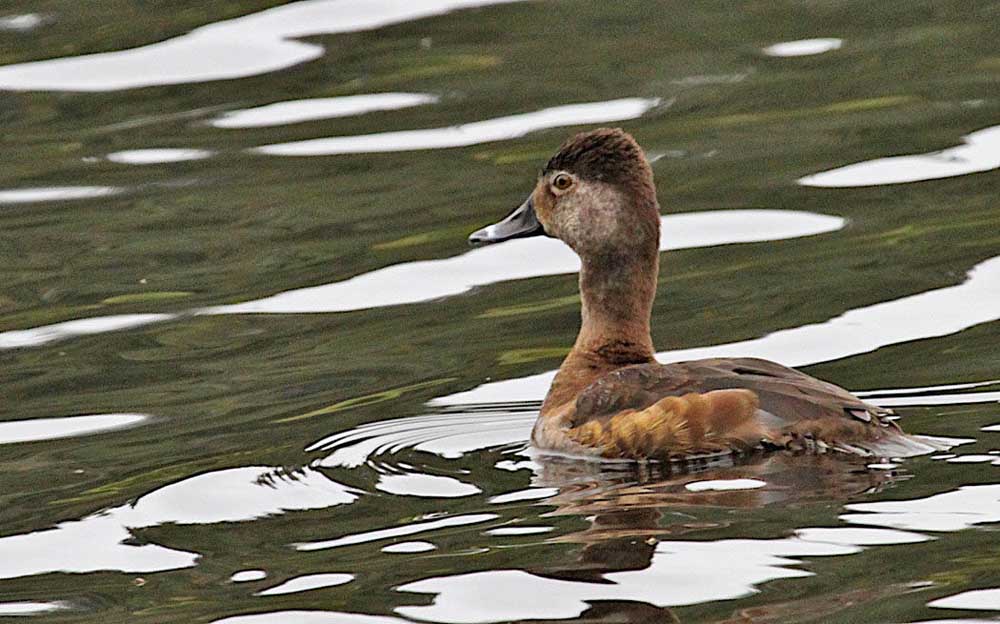Birdwatching Ring-necked Duck: Would you change its name?
Published 12:22 pm Tuesday, March 28, 2017

- A female ring-necked duck paddled in a local waterway.
By Dr. Madeline Kalbach
Trending
For the Observer
The first major movement of birds in the spring involves the group of birds known as waterfowl. The ponds, marshes, lakes and wetlands of the Willapa National Wildlife Refuge and the Long Beach Peninsula are now alive with waterfowl. They stop here to feed and rest before continuing north to their breeding grounds.
One of the duck species that frequents our area during migration is the ring-necked duck. The male is striking in appearance with his black head with its purplish sheen, silver-grey sides and brilliant white shoulder. The female is a rich brown in color with a whitish area around and behind the eye. Both the male and female have a distinctively sharp peak at the rear of their crowns. Size-wise they are a little smaller than a mallard.
Trending
The ring-necked duck is so named because the male has a chestnut collar. However, it is very hard to see. As the photo reveals, and upon close inspection, it is there. Many scientists argue that because the chestnut collar is so hard to see, but the white ring around the bill is so prominent, perhaps the duck is misnamed! A popular suggestion is the ring-billed duck!
The ring-necked duck especially enjoys shallow water where it dives for mollusks, invertebrates and aquatic vegetation. Spring and fall migration are the best times to see the ring-necked duck. According to eBird, it has been recorded on the Refuge at the Tarlatt Unit and Leadbetter. Elsewhere it has been seen at Black Lake, Cape Disappointment, Loomis Lake and Beard’s Hollow.
I recommend that when you see the ring-necked duck that you look closely for the male’s chestnut collar. Be sure to check out the small shallow wetlands, ponds, bays and other small bodies of water on the peninsula for this strikingly beautiful duck.









